
I used to be a smart-ass who would say things I thought were clever but really were just annoying to most people. When I learned the basics of quantum physics, for example, I had a clever/annoying answer for anyone who asked me, “What’s new?” E over h, I’d respond. Hahaha! Then we’d both laugh our heads off. Just kidding. They’d look at me like I just stepped out of a flying saucer, and I’d explain the “joke.”
Some of you know where my answer came from, but let me explain. It really does bear on the subject of this article. E/h = ν, where E is energy, h is Planck’s constant, and ν, the Greek letter nu, is frequency. That’s the energy of photons for electromagnetic radiation with frequency, ν. So the higher the frequency, the higher the energy of the photons.
This is important in understanding ultraviolet (UV) radiation and its use in buildings. UV lamps are sold as an aid to improving indoor air quality (IAQ), and lately that includes killing any coronavirus that may be in the air in your home. Let’s begin by understanding the first part first, UV radiation. Then we’ll answer the question about whether UV lamps help your IAQ.
Ultraviolet radiation
Electromagnetic radiation can be described by its wavelength or its frequency. You can convert between the two using its speed, which, for electromagnetic radiation, is the speed of light. Wavelength and frequency are inversely proportional. When one increases, the other decreases. Longer wavelengths mean lower frequency. Higher frequency means shorter wavelength. Here’s a nice illustration of the electromagnetic spectrum showing that relationship and more.
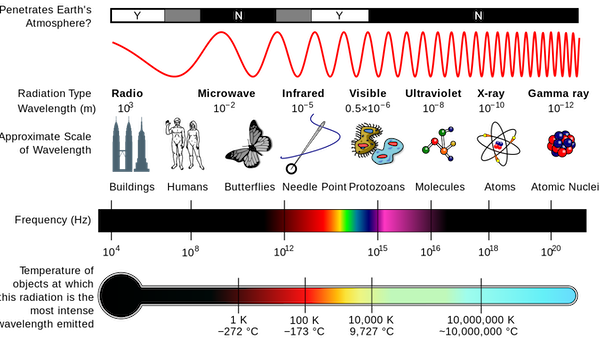
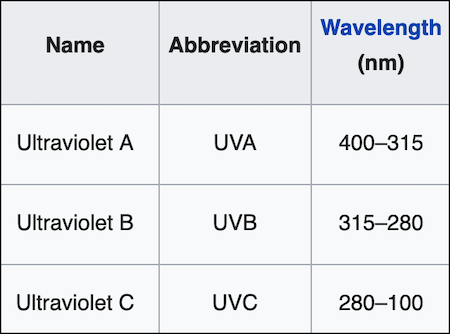
Using UVC to kill microorganisms
The thing about UVC, though, is that even though a lot of it is generated by the Sun, none of it makes it to the Earth’s surface. It’s all absorbed by the ozone layer in the stratosphere. (Ozone is an important part of this discussion in another way, too. We’ll come to that in a bit.) As a result, life here on Earth has evolved without exposure to UVC and that makes all kinds of life forms vulnerable to it if exposed.
![Different bands of ultraviolet wavelengths are absorbed differently by the atmosphere [Image by NASA, public domain]](https://images.greenbuildingadvisor.com/app/uploads/2020/04/23104838/ultraviolet-uva-uvb-uvc-absorption-by-atmosphere.png)
And yes, this does work. Yesterday I watched a webinar with Professor Bill Bahnfleth on the topic of what’s called ultraviolet germicidal irradiation (UVGI), and he showed some of the studies that have proven the effectiveness of using UVC to stop the spread of infectious disease. (Here’s a link to the recording of the webinar, and here’s the pdf of the slides.)
What UV lamps do
There are two ways that UVC irradiation kills or incapacitates the bad stuff. It kills them in the air and it kills them on surfaces. Also, UV lamps are generally used either out in a room, buried inside an HVAC system, or in a standalone air cleaner. I’m going to focus mainly on in-duct UV treatment here because putting exposed UV lamps in a living room or kitchen is not something that people do with their homes. (I hope not anyway.) That technique is for hospitals and healthcare facilities.
Most UV lamps are like fluorescent lights. It’s the same technology but the primary output is UVC. In fact, it’s a specific wavelength of UVC: 254 nanometers (nm). The mercury vapor in the lamps emits at that frequency, and it turns out to be pretty darn good for killing germs. The graph below shows that the peak of germicidal effectiveness occurs at 265 nm, so our mercury vapor UV lamp gives us UV light that’s about 80% to 90% effective relative to the peak.
![UV germicidal effectiveness peaks at a wavelength of 265 nm [ASHRAE HVAC Applications Handbook, 2019]](https://images.greenbuildingadvisor.com/app/uploads/2020/04/22163936/uv-germicidal-effectiveness-ashrae-handbook.png)
UV lamps in residential HVAC systems
The first thing to say here is that it’s not common to find UV lamps in residential HVAC systems. Some homes do have them, but it’s a small percentage so chances are you don’t have one. Second, let’s go back to the two ways that UV lamps kill microorganisms: in the air or on surfaces.
In the lead photo of this article, you see UV lamps installed inside an air handler, between the cooling coil and the filter rack. The primary benefit of using UV lamps like this is to kill stuff growing on the coil or in the drain pan below it. Air conditioning coils get wet by condensing water vapor. When they stay wet, they tend to start biology experiments as dirt and microbes collect there. In a system with poor filtration and leaky return ducts, it can get really bad, as you can see below (and read about here).
![A dirty air conditioner evaporator coil with biofilms [Photo by Energy Vanguard]](https://images.greenbuildingadvisor.com/app/uploads/2020/04/22164046/hvac-air-conditioner-evaporator-coil-dirt-and-air-flow-4.jpg)
So for UV lamps integrated into the HVAC system, the main benefit is to keep stuff from growing on the surfaces, especially the coil and drain pan. It’s not going to kill much coronavirus or other baddies that get pulled into the ducts.
In addition, you have to make sure the materials that will be exposed to the UV irradiation can take the heat. As we all know, some materials break down from UV exposure, a process called photodegradation.
The huge downside of some UV lamps
One thing that’s missing in the discussion of UV lamps a lot of times is the other wavelength that mercury vapor lamps generate. In addition to the 254 nm output, they also produce UV at a wavelength of 185 nm. That’s well off the peak of germicidal effectiveness (see graph above), but it’s worse than just ineffective. That shorter wavelength, higher frequency, higher energy UVC radiation causes regular oxygen molecules (O2) to break up and then form ozone (O3).
And ozone, which is great in the stratosphere, is a pollutant here at ground level. Here’s what the US Environmental Protection Agency (EPA) has to say about it:
When inhaled, ozone can damage the lungs. Relatively low amounts can cause chest pain, coughing, shortness of breath and throat irritation. Ozone may also worsen chronic respiratory diseases such as asthma and compromise the ability of the body to fight respiratory infections.
You don’t want ozone in the air in your home. Yes, some companies do sell ozone generators and make claims about how the ozone will react with the indoor air pollutants and neutralize or destroy them. Those claims are not supported by scientific data. The EPA page on ozone generators shows what really happens.
Not all UV lamps result in ozone generation, however. The key is the glass used in the lamp. Soft glass or regular quartz glass allow the 185 nm UVC to pass through and generate ozone. But when quartz glass is doped with titanium, all of the 185 nm UVC is absorbed. For in-duct UV lamps, UL has a standard that some companies use to get their products tested and labeled. Here’s the label from the APCO-X UV lamps made by Fresh Aire UV. (They’re the same company whose UV lamps are shown in the lead photo at the top of this article.)

What’s a homeowner to do?
What it all comes down to is that UV lamps can help with some things, they’re not so good at others, and you need to watch out for the bad things they do. Here’s a recap:
- In a residential setting, their best use is to keep the air conditioner coil and drain pan clean.
- They’re not so good at killing viruses, bacteria, and fungi in your home’s air, so they’re not going to help much with killing coronavirus in your home.
- You still need to do source control, filtration, and ventilation for good indoor air quality, and that’s where you should start.
- Some materials degrade when exposed to UV so you need to make sure your system won’t break down.
- Some UV lamps generate ozone so you need to get one that’s shown to be ozone-free.
There you have it. Ultraviolet irradiation can help with your indoor air quality at home, but probably not as much as you were told by the person selling you the UV lamps. And if you show this article to them, they’ll tell you I’m just a smart-ass who doesn’t know anything about the real world. Maybe they saw me step out of that flying saucer.
Allison Bailes of Atlanta, Georgia, is a speaker, writer, building science consultant, and founder of Energy Vanguard. He is also the author of the Energy Vanguard Blog. You can follow him on Twitter at @EnergyVanguard.
Weekly Newsletter
Get building science and energy efficiency advice, plus special offers, in your inbox.





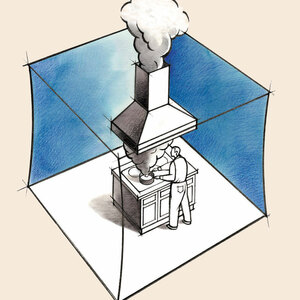
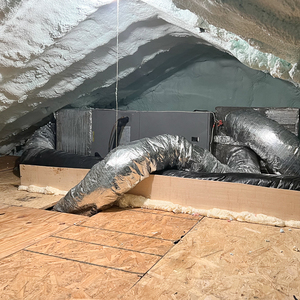
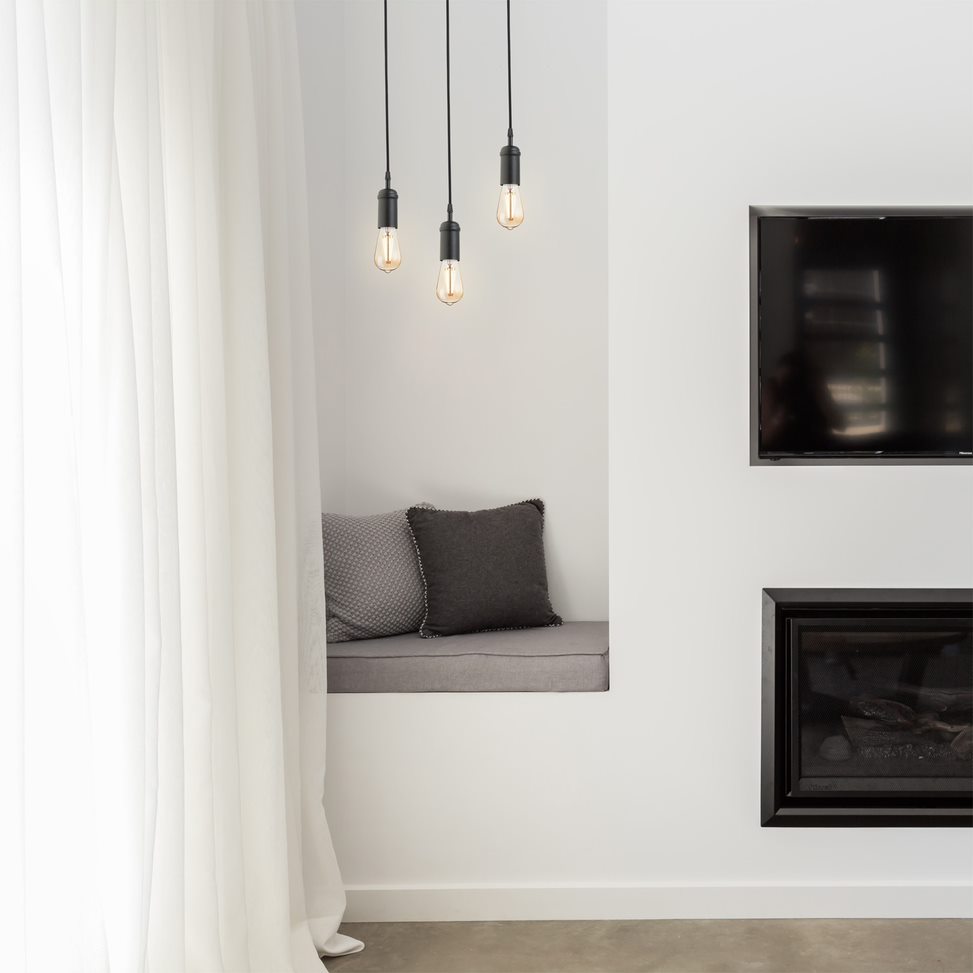
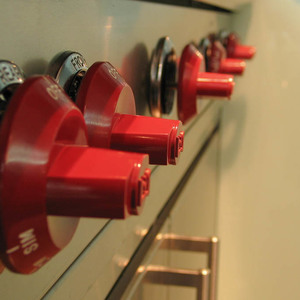






35 Comments
> ozone will react with the indoor air pollutants and neutralize or destroy them. Those claims are not supported by scientific data.
For some pollutants, these claims ARE well supported. And confirmed personally. But there are various reasons why, in most cases, you don't want to use ozone.
Overall, good article.
Jon R, yes, my statement is not worded as well as it could be. The EPA page I linked to provides more detail. Here's the link that takes you straight to that part of the page:
https://www.epa.gov/indoor-air-quality-iaq/ozone-generators-are-sold-air-cleaners#generators-effective
“[Deleted]”
The way I heard the joke of "what's new/nu?" is "c over lambda". Both are right, of course. This was from the same professor who said he was once on a softball team they named "H Bar and Grill".
Paul, that's a great place to eat. I got a couple of pis there one time. ;~)
As with water, UV renders virus', bacteria etc temporarily harmless until ingested but does not completely kill them as posted. Pasteurization through a time/ temperature exposure kills them. So I would think that UV would have the same effect on air. Air flow rate and exposure time would need to be considered. Best to clean and sanitize your air handler with a mild bleach solution occasionally or on a regular basis depending on conditions.
I disagree - enough of the right UV and they do die. Agreed, a few will survive.
Maybe pedantic, but you can't kill viruses because they're not alive in the first place.
Very pedantic. My wife gets annoyed every time I say it. I suspect we should probably stop. :-)
> can't kill viruses because they're not alive
But bills are? As in "The committee killed the bill by a 9-2 vote" or "most bills die in committee?
Trevor, I think that depends on how you define life. Whether viruses or alive or not has been debated for a long time. Here's a good Scientific American article about that:
https://www.scientificamerican.com/article/are-viruses-alive-2004/
"used to be a smart ass?"
Well, I guess it makes sense that you're the first one to say that, Mr. Green Curmudgeon. ;~)
Can UV degrade your HVAC equipment? Would you suggest any type of Air Cleaners?
Six years ago we installed UV systems in all of our supply side air units between the coil and blowers. After one year both were cleaner and had better air flow across the coil.
I installed a single tube unit in the center of my A coil. It got rid of the dirty sock odor in my HP. I feel they work best in Heat Pumps and water source systems due to the low coil temperature.
Allison, excellent and timely article.
According to the companies that sell them, UV lamps also kill baddies in water systems. Given the points you made in this article:
1. Exposure time. Would a UV light not be far more effective in a storage tank (as opposed to a low volume flow-through device) with regard to exposure time?
2. Byproducts. Would uncoated UV lamps cause ozone or other nasty byproducts when used in a water system, similar to how they cause ozone in air?
A third question. Given the power consumption of these UV systems, are we close to seeing a more efficient narrow-wavelength LED-based solution? Last I checked (a couple of years ago) none were available. The benefits of an LED system would be less power consumption, and the ability to switch on and off instantly with water flow. Fluorescent systems are generally "always-on" due to the lamp's warm up time, as far as I understand.
Lance,
1. The reason UV lights are placed in tubes surrounded by a very thin outer pipe is that the efficacy of the treatment decreases markedly with distance due to sediment in the water.
2. I have never heard of any harmful byproducts for UV exposure in water. Chlorination however can produce THMs, which is why most modern water systems try and rely on other treatments, and only use it to keep the pipes downstream clean.
3. Yes, depending on what it is being used for. 222nm LEDs are currently a 'holy grail' of the VU disinfectant studies. 222nm is being concentrated on as it is in the 'magic band' just past where it generates ozone, but short enough a wavelength where pathogen cell walls are most easily killed (killed vs. just deactivating pathogens to address Tom May's point). 222nm is also in the magic band where it does not penetrate human tissues past dead skin layer hence is not carcinogenic, and studies show not harmful to eyes. 222 nm does not cause sunburn either.
Thanks for the info, Malcolm!
Looks like Ushio has a commercially available unit, though patented and likely pretty expensive. I've used their fluorescent T8 tubes in the past.
https://www.ushio.com/product/care222-mercury-free-far-uv-c-excimer/
Lance,
I got most of that from friend in Washington State who has been pulled out of retirement to work 60 hour weeks on this in the last month.
Interesting. Is he doing R&D on the technology, or working to bring a product to market?
I was planning a work trip to Redmond WA for the end of March when COVID broke. That got canned in a hurry...
He was an engineer for a defence contractor, so he's always been a bit taciturn about who the work he does is for. I think the idea is to bring something to market though.
Very cool! I'm sure he will be an interesting fellow to know over the next little while!
Very interesting and a bit eccentric. He has over 20 sheds!
Several years ago I asked E Source (https://www.esource.com/) about UV lamps in residential HVAC. In addition to the points you make, their answer pointed out that only a portion of the air in a home has been filtered/treated by passing through the ducts. Don Fugler's research on what residential air filters/cleaners can accomplish makes a similar point.
If I recall correctly, facilities that commonly use UV in ducts (hospitals? labs?) pass a very high percentage of air through their ducts. The high flow rate uses much more electricity than a residential air handler.
Disclosure: We have a whole-house air cleaner (9" deep-pleated filter) instead of a standard furnace filter. Great for keeping HVAC equipment clean.
CDC endorses use of permanently installed overhead UV lights to kill bacteria https://www.cdc.gov/niosh/docs/2009-105/default.html
See for example Philips at https://www.lighting.philips.com/main/products/special-lighting/uv-purification/air
I'll tell you something that's over my head, these lamps mounted at 2.5 m and higher have effects on HVAC return requirements, hard for me to make head or tail of.
https://www.sciencedirect.com/science/article/pii/S2214157X19300541
Kills bacteria but I don't know if it inactivates viruses.
On a vaguely related note there are also several manufacturers of UV robots for hospitals but everybody has to get out of the room. when they are illuminated.
> ultraviolet lamps in your HVAC system may kill viruses, bacteria, and fungi
But note: "mice raised in sterile, germ-free environments have poorly developed immune systems". So further support for "most homes don't need UV".
The coils in my AC show no signs of mold - even without UV. Which leads to "why not"?
An off-the-cuff guess - because my AC is somewhat oversized and so has lots of periods where it doesn't run. This causes the coil to dry, preventing mold growth.
If I replace it with smaller, inverter AC that runs continuously, am I likely to get mold? Should AC units deliberately dry the coil once per day?
Perhaps homes with musty moldy basements would be more susceptible to having growth on their evap coils?
Marketing opportunity for heat pump manufacturers: a setting that heats the coil every X hours to eliminate mold/bacteria/viruses during cooling season use.
Yeah, it's important to make sure that in most cases it isn't a solution in search of a problem. And as Johnathan pointed out: The majority of the air in any home does not come through the HVAC system.
To Jon R, Many years ago while living in the midwest, I was advised by our local mechanic on how to avoid the stinky basement smell car A/C systems were prone to. He told me to to cut the A/C function off for five or so minutes before turning off the car and fan function. If recirculation was an option so much the better to keep the fan on with recirc. I never did suffer the stinky AC after adopting his advice.
I can now see that he was mimicking the delay timing for the fan function on home A/C systems. If a home system is set up correctly (and not wildly oversized) the cooling function should drop out about 5-7 minutes before the fan cycle does. This may be partly to ensure enough "mix time" for the air in the house to distribute more evenly, but it will also tend to strip off the surface condensation on the coils. A over sized unit that is short cycling or has somehow altered the fan delay is more likely to leave enough condensate film behind to let mold get a foot hold.
As Jonathan noted earlier having a really good high surface area filter ahead of the coils will definitely pay big dividends. I helped a friend upgrade a desktop computer once, whose HVAC had a big "space something" pleated filter. The computer box was absolutely new looking inside despite being in service for four years. I could have reconstructed all by pets by using the hair I would have had in my computer after that much time. Anyway, I am pretty sure the furnace coils were likely as spotless. No food, no mold might be an added bonus.
The UV lighting aspect of the general thread here has amply covered the many fine points about why blasting air past a UV bulb isn't too effective. I am a bit curious about Malcolm's mention of 222nm UV light being a holy grail. UV-C is roughly 100-290nm and I thought all UV-C output was considered extremely harmful to people's flesh and eyes. Welder's eye comes from poor viewplate restriction of UV-C energies from the arc. It would be interesting to know how the electronic self darkening view plates handle it. Any references to offer that 222nm is stopped safely by skin. I think the UV lights used to sterilize rooms in hospitals are high output UV-C lights, which means the rooms must be sealed against entry while the light is on.
Time and energy density is what generally breaks down the virus and bacteria surface contaminants, so having perpetual UV lights over my head that are capable of killing viruses or bacteria would be rather concerning. I already have spots on my head that need yearly monitoring. Since all florescent tubes I am familiar with are actually UV bulbs with phosphor coatings to provide re-emission in visible frequencies, I may have already found out how that idea would end up going.
The main issue with running the fan after a cooling cycle is decreased dehumidification, since every cycle ends with putting all that water back into the house. The shorter the cycles the worse it is.
A properly sized unit wouldn’t put too much humidity back into the house in the heat of summer, but would in the shoulder seasons.
> having perpetual UV lights over my head that are capable of killing viruses or bacteria would be rather concerning
I get that, and a close relative of mine had a similar risk factor that you describe. But they are apparently to code in hospitals 24/7, Philips ad shows actors posing in a recovery room. This has apparently been safety engineered. I'm not recommending them, I'm just saying.
From the Philips link I give above
"Waiting and recovery rooms in hospitals and sometimes class rooms in schools may use upper air luminaires for daily disinfection of the air. These systems are usually installed at a height of 2.5m and work with natural convection of air. As air passes through, it gets disinfected and in general achieve reduction of 70-80% of viruses. Typical lamp wattages go up to 75W."
Since it's already been established here that 1000 Plumber R Us website claims about in-line UV are bogus, I wonder if some illumination experts have anything to say about common 2.4 m ceiling heights in the US.
Lance,
My understanding, though limited, is that condensate collecting on the coils is directed away during the cooling cycle. The residual "wetness" that could contribute to mold growth on dirty coils is all that would be re-introduced to the house. The amount would be trivial compared to what should be being drained off.
The shoulder seasons producing more humidity would indicate short cycling to my thinking, so I would agree that the shorter the cooling cycle the worse the results. The coils have to build up enough water to overcome the droplets surface tension resistance to flowing down. In a short cycle then the water removed would indeed then be re-introduced by a long after cycle.
I am sure there must be some AC mavens out there that can describe better the fan speed and cooling cycle tricks manufacturers must have at there disposal.
You're correct Roger. Excess condensate does drain from the coil. The issue is, it takes a while of running cold before enough condensate gathers that it will drip off the coil, pool in the pan, and flow out of the air handler. Until that condensate starts flowing out the system hasn't technically done any dehumidifying.
I have not timed how long it takes on my system, but I did notice a reduction in indoor RH of about 5-7% when I set my thermostat controls to not over-run at the end of an AC cycle. At the same time I set a minimum cycle time to make sure the AC would run longer (it would short cycle a lot early in the day).
What I have not done is check the condition of my evap coil since making those changes. I run good furnace filters, but the furnace body is far from being air-tight. I'll make a point of drilling a couple of access holes so I can see in there with an inspection camera and make sure there's no nasty stuff going on. Mine is a circa-2005 single stage two-ton unit. Touch wood, it's still working.
All, what do you think of a ceiling fan which points UV-C upward: https://www.bigassfans.com/air-disinfection/ (see Haiku with UV-C)
Plausibly effective? Safe? It appears to use a 22 W LED at 265 NM wavelength. I am skeptical, but here is how I imagine it might be argued to work: with proper fan spacing, almost all air in a room is treated (unlike with an air handler), and although the exposure in any one pass is not enough to do much disinfecting, the circulation is frequent enough to have a significant effect over time. They claim 99.9% microbial reduction in 10 minutes (presumably assuming no new microbes introduced in that 10 minutes). So if the total volume of air passed through the UV, say, 30 times in 10 minutes, then that would require killing 20% on each pass. That sounds like a stretch to me, but I'm basing that purely on gut feeling. Does anyone have a better sense?
As far as safety goes, I imagine that the argument is that the UV diffuses enough after reflecting off the ceiling to be safe. However, if UV damage is cumulative (as I think it is), then I'm skeptical that the reflected UV is so low as to be of no concern. My concern is more about slowly accumulating eye damage than it is about sunburn. Again, does anyone have a better sense of this than I do? If the claims are all true then it seems like a pretty cool product for public spaces.
The Illumination Engineering Society has much to say about the safety and effectiveness here. I'm less clear on the standards in use and the proof that a product works. I suppose that the UV luminaires that some hospitals use must undergo testing to specific standards.
Germicidal Ultraviolet (GUV) –Frequently Asked Questions
Authoring Committee: IES Photobiology Committee
https://www1.fsgi.com/wp-content/uploads/IES-CR-2-20-V1-6d.pdf
"Upper-room GUV is a safe means of air disinfection that is possible in rooms with high ceilings. In this method, specially designed and installed UV-C fixtures that irradiate only the air above 2.1 meters (7 feet)constantly disinfect the upper air volume. This is most effective when there is constantly mixed air by fans and HVAC ventilation, but even without strong ventilation or fans, air constantly mixes by movements and normal convective currents."
The fan maker also has some non-ozone-producing ionizers. I don't know about their use in an open room, but they have supposedly been shown to be effective in ducted systems.
https://iopscience.iop.org/article/10.1088/1361-6463/ab1466
Log in or create an account to post a comment.
Sign up Log in